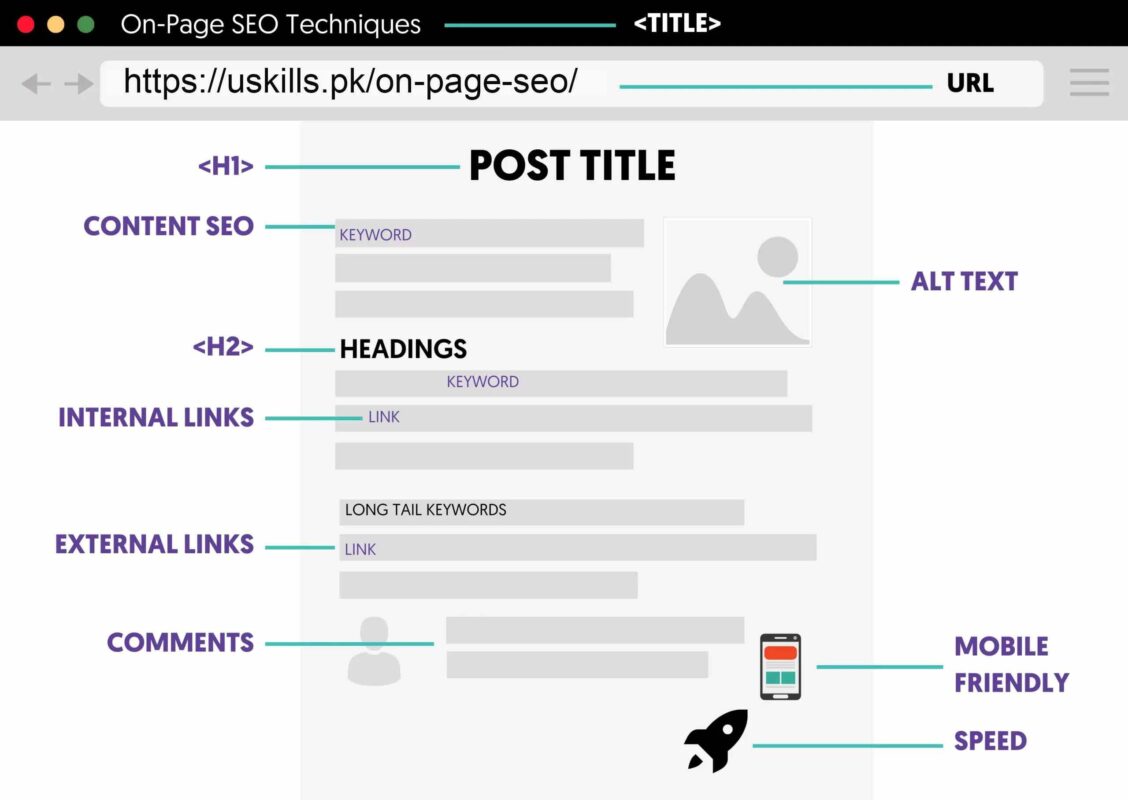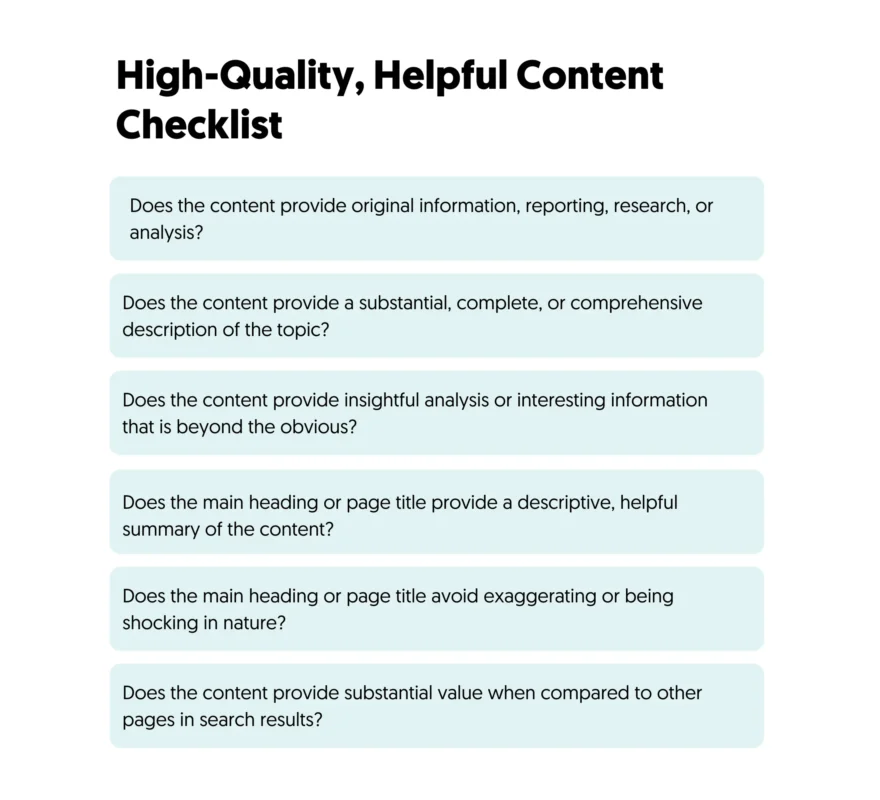What is On-Page SEO? Big Guide to On-Site Optimization

What is On-Page SEO?
On-page SEO, also known as on-site SEO, refers to the process of optimizing individual web pages to improve their search engine rankings and attract more relevant traffic. When we ask, “what is on page SEO?”, we are talking about strategies that focus on optimizing content, meta tags (like title tags and meta descriptions), headings, images, and the overall structure of a webpage. The goal is to make the page more accessible and understandable to both search engines and users. One of the key aspects of on-page SEO is keyword optimization, where keywords like “what is on page SEO” are naturally integrated into the content to help search engines understand the page’s relevance to specific queries.
In addition to content optimization, on-page SEO also focuses on enhancing the user experience by improving page load speeds, mobile responsiveness, and navigation. This ensures that users have a smooth, engaging experience on the site, which can increase dwell time and reduce bounce rates — both of which are positive signals for SEO.
The benefits of on-page SEO are numerous. It helps web pages rank higher in search engine results, leading to increased organic traffic. This optimization also improves user engagement by delivering relevant, easy-to-read content, and enhancing the overall experience. Additionally, better-optimized pages are more likely to convert visitors into customers due to their user-friendly design and valuable content. Overall, on-page SEO not only boosts a website’s visibility and traffic but also enhances its authority and credibility in the eyes of both search engines and users.
The primary objective of on-site SEO is to make it as simple as possible for both search engines and users to:
- Comprehend the content and purpose of a webpage;
- Recognize that the page is relevant to specific search queries or keywords;
- Determine that the page is valuable, providing useful content that deserves a high ranking on search engine results pages (SERPs)
Why is On-Page SEO Important?
On-page SEO plays a critical role in the success of a website by ensuring that individual web pages are optimized for both search engines and users. It helps search engines understand the content, assess its relevance, and determine whether it should rank high in search results. For users, it enhances the overall experience by improving readability, navigation, and relevance to their search queries. The combination of these factors makes on-page SEO essential for driving organic traffic, increasing visibility, and boosting engagement.
Here are some key reasons why on-page SEO is important:
- Improved Search Engine Rankings: Properly optimized pages rank higher in search results, making them more visible to potential visitors.
- Enhanced User Experience: On-page SEO focuses on creating a seamless experience, from easy navigation to well-structured content, ensuring users stay longer and engage more.
- Increased Organic Traffic: Better rankings lead to more organic traffic, as search engines are more likely to present your page to users searching for relevant terms.
- Higher Conversion Rates: Optimized content, combined with a smooth user experience, leads to better engagement and increases the likelihood of converting visitors into customers.
- Better Content Relevance: On-page SEO ensures that the content on your pages aligns with user intent, increasing the chances of satisfying their search queries.
- Increased Site Authority: High-quality, optimized pages help establish credibility and authority with both users and search engines, contributing to long-term success.
On-Page SEO: Key Elements:
On-page SEO revolves around optimizing both keyword-related and non-keyword-related aspects of a website. Here’s a breakdown of how each contributes to a successful SEO strategy:

On-Page SEO Factors: Keywords, Content, and Key Elements
On-site SEO, also known as on-page SEO, is the process of optimizing individual web pages to improve search engine rankings and attract more relevant traffic. The core components of on-site SEO include keywords, content, and various other technical and user experience factors. Each of these elements plays a crucial role in ensuring that search engines understand the purpose of your pages while delivering an excellent experience for users. Let’s dive into how keywords, content, and other on-site SEO factors contribute to a successful SEO strategy.
1. Keywords in On-Site SEO
Keywords are at the heart of on-page SEO. They represent the search queries that people type into search engines and serve as a bridge between what users are searching for and the content provided on your website. Optimizing for the right keywords helps search engines match your pages with relevant user queries, improving your chances of ranking higher in search results.
- Keyword Research: The first step in optimizing any page is identifying the right keywords to target. Tools like Google Keyword Planner, Ahrefs, or SEMrush can help you find keywords with a high search volume and low competition. Choosing relevant, high-intent keywords that align with your audience’s needs is key to attracting the right traffic.
- Keyword Placement: Once you’ve identified your target keywords, it’s essential to place them strategically on the page. This includes:
- Title tags: The title of your page should include the primary keyword and give users and search engines an immediate idea of what the page is about.
- Meta description: A brief summary of the page that includes the main keyword and entices users to click on your result in search engine results pages (SERPs).
- Headings (H1, H2, H3): Incorporating the primary keyword in your H1 (the main heading) and secondary keywords in subheadings (H2, H3) helps to structure your content and improve SEO.
- First 100 words: Including your primary keyword in the introduction signals to search engines that the page is relevant to the topic.
- Latent Semantic Indexing (LSI) Keywords: These are semantically related keywords that help search engines understand the broader context of your page. Including related keywords naturally throughout the content provides additional relevance without overstuffing the main keyword.
2. Content in On-Site SEO

Content is arguably the most important factor in on-page SEO. Search engines prioritize high-quality, original, and engaging content that meets the needs of users. Well-written content not only helps with rankings but also keeps users engaged, encouraging them to spend more time on your site.
- Content Relevance and Quality: Your content should be closely aligned with the search intent behind the keywords. If users are searching for “what is on-page SEO,” your content should provide a detailed explanation of the topic. It’s important to focus on delivering value and answering users’ questions comprehensively.
- Content Length and Depth: In-depth content that covers a topic thoroughly tends to rank better. Longer content gives you more opportunities to use your keywords naturally and provide more value to users. However, the quality of the content is more important than the length — avoid fluff or irrelevant information just to make your content longer.
- Multimedia Elements: Incorporating images, videos, infographics, and other multimedia elements can enrich the content and keep users engaged. Optimizing multimedia with proper alt text, captions, and file names also contributes to better SEO performance.
- Regular Updates: Content should be kept up to date to maintain its relevance. Search engines favor fresh, current information, so updating older pages with new insights or information can give them an SEO boost.
3. On-Site SEO Factors Beyond Keywords and Content
While keywords and content form the backbone of on-page SEO, there are several technical factors that ensure your website is optimized for both search engines and users.
- Title Tags and Meta Descriptions: These elements provide a brief summary of the page’s content to both users and search engines. The title tag should be under 60 characters and include your target keyword. The meta description, while not a direct ranking factor, should be engaging and informative to improve click-through rates.
- URL Structure: A clean, keyword-optimized URL makes it easier for search engines and users to understand what the page is about. For example, “example.com/what-is-on-page-seo” is more effective than “example.com/page-12345.”
- Internal Linking: Linking to other relevant pages on your website helps search engines crawl and index your site more effectively. It also improves the user experience by guiding visitors to additional resources.
- Page Speed: Page load time is a critical factor for both SEO and user experience. Websites that load quickly rank better and have lower bounce rates. Optimize images, leverage browser caching, and use a content delivery network (CDN) to enhance page speed.
- Mobile Optimization: With the majority of users accessing the web via mobile devices, having a mobile-friendly website is essential. Google’s mobile-first indexing means that your website’s mobile version is prioritized for rankings, so ensuring a responsive design is crucial.
- User Experience (UX): A positive user experience can have a big impact on SEO. Factors such as easy navigation, clear CTAs (call-to-action), and a clean, intuitive layout all contribute to lower bounce rates and longer dwell times, signaling to search engines that your content is valuable.
Non-Keyword-Related On-Site SEO Factors:
When optimizing a website for search engines, it’s essential to consider various non-keyword-related on-site SEO factors that contribute significantly to user experience and overall site performance. Here are some key elements to focus on:
1. Page Load Speed:Page load speed is crucial for retaining visitors and reducing bounce rates. Users expect web pages to load quickly; if a page takes too long, they are likely to leave. To enhance page speed, optimize images, reduce the number of HTTP requests, and enable browser caching. Tools like Google PageSpeed Insights can help identify areas for improvement.
2. Mobile-Friendliness: With a growing number of users accessing websites via mobile devices, ensuring your site is mobile-friendly is essential. Google prioritizes mobile-friendly websites in its rankings, so implementing a responsive design that adapts to various screen sizes is critical. Test your website’s mobile compatibility using Google’s Mobile-Friendly Test tool to ensure a seamless user experience.
3. User Experience (UX): A positive user experience encourages visitors to engage with your content and stay longer on your site. Key factors influencing UX include intuitive navigation, clear calls to action, and an aesthetically pleasing layout. Conduct user testing and gather feedback to refine your site’s design and functionality, enhancing overall usability.
4. Security (HTTPS): Website security is increasingly important for user trust and SEO. Implementing HTTPS (HyperText Transfer Protocol Secure) not only encrypts data transmitted between your server and users but also signals to search engines that your site is secure. Obtaining an SSL certificate is a straightforward way to enhance your site’s security and credibility.
By focusing on these non-keyword-related on-site SEO factors, you can significantly improve your website’s performance, user engagement, and search engine rankings.
Conclusion:
In conclusion, effective on-site SEO requires a careful balance of both keyword-related and non-keyword-related factors. Keyword-related elements, such as strategic keyword placement in content, headings, and meta tags, are essential for helping search engines understand the context of a webpage and its relevance to specific search queries. By optimizing these aspects, website owners can improve their visibility in search engine results, attract targeted traffic, and increase the likelihood of conversions. High-quality, keyword-rich content is vital for engaging users and establishing authority in a particular niche.
On the other hand, non-keyword-related factors play an equally important role in ensuring a positive user experience and enhancing site performance. Elements such as page load speed, mobile-friendliness, intuitive navigation, and secure browsing (HTTPS) significantly impact how users interact with a website. By prioritizing these factors, businesses can reduce bounce rates and encourage longer visit durations, which are favorable signals to search engines. Ultimately, integrating both keyword-related and non-keyword-related SEO strategies creates a holistic approach that not only improves search rankings but also fosters user satisfaction and loyalty, contributing to long-term online success.
